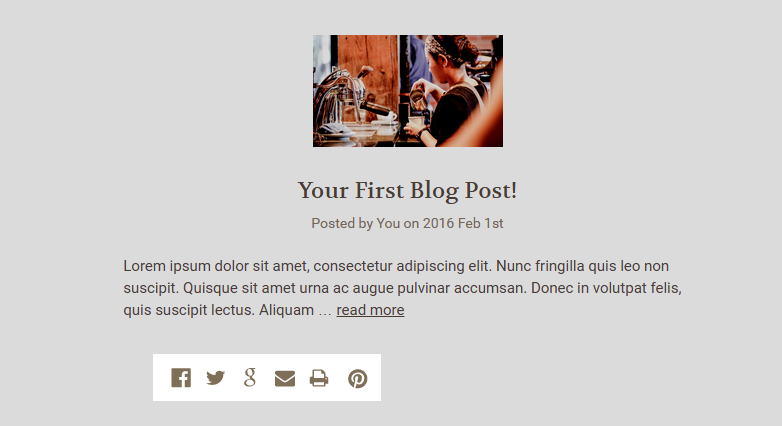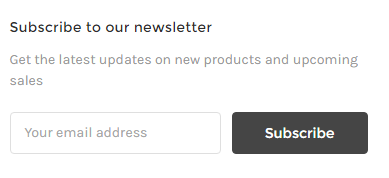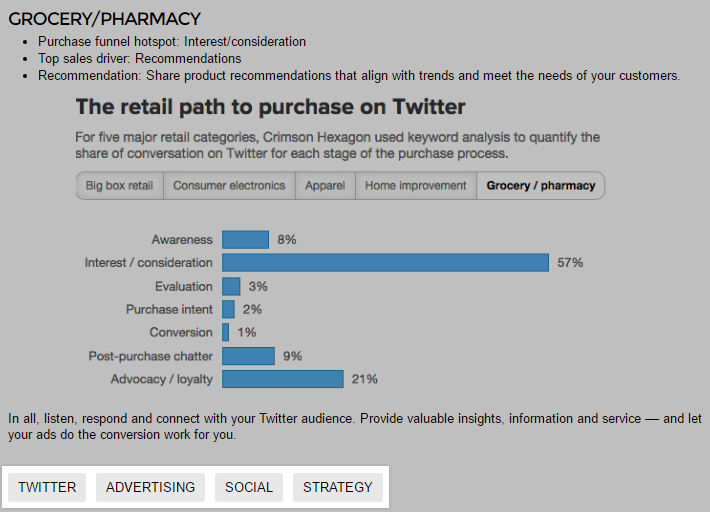Blogging Best Practices
Best Practices for Blogging
Benefits of Blogging
Having relevant, informative and unique content on a website is a proven method of attracting traffic. One way to achieve this is by regularly scheduling posts in a content-rich blog.
Entice visitors on your blog to shop, sign up for your newsletter or share your content on their social media networks. This will turn them from spectators into active customers.
Whether you’re using our built-in blogging platform, or a third-party solution, like Wordpress, the essentials to blog publishing are the same. Here are some best practices to help get you started.
Inform, Entertain and Engage
Write specifically for your marketplace or industry. Your content should be informative and entertaining for your audience.
Bring insight to a topic and the reader will appreciate the value of your contribution. This is more sincere than just marketing to them with a “buy from me” message.
Nobody knows your business better than you do, so try to establish an authoritative tone in your content. Thought leaders in their space bring readers back to their site when they are ready to make buying decisions.
For example, if you sell cameras, a post about different lighting and exposure techniques would be interesting to someone who's likely to buy a camera online.
Engage your audience and get them involved by asking them to share their own content. If you sell clothes, encourage buyers to submit photos of themselves wearing your product, and to share those photos on their social media networks like Facebook and Twitter.
Provide a way for your readers to reach out and interact with your store and brand. Using calls to action like inviting a shopper to sign up for a newsletter, offering a free ebook, or petitioning to fill out a survey offer a way for your potential customers to communicate with you directly.
Offer discounts for sharing posts or signing up for your newsletter - for many shoppers, this is often when they commit to buying.
Want shoppers to buy directly from your blog? With the Buy Buttons app, you can build custom "Buy" buttons and links that when clicked add products to the cart.
Appeal to Your Different Audiences
You can write on the same topic many times, but with different personas or demographics in mind. This way you can leverage content you've already created, and repurpose it into another post aimed at a different buyer segment. This is also useful for targeting specific niche audiences when marketing on social media.
For a merchant that sells men's grooming products, they might author a post about a beard trimmer for a busy, traveling executive, and mention it charges fast and is great for everyday use. For the young, hip college guy, however, they might focus on how versatile the trimmer is for trying different facial hair styles from week to week.
Optimize Your Content for Search Engines
To help the SEO of your blog, use long tail keywords and phrases when authoring posts. There are several keyword suggestion tools online that can help you discover what your audience is searching for.
This can help smaller merchants stand out from the big box retail stores and other online marketplaces, like Amazon or eBay. Large competitors have already optimized for basic search terms, like "beard trimmer", so you'll have a better chance at getting someone specifically searching "beard trimmer for long beard".
Make Your Post Easy to Read
The content of a blog post is meant to be digested quickly and easily. You should use short, 1 to 3 sentence paragraphs with clear headings and subheadings, so that a reader can quickly skim over the post to get to what appeals to them.
For lists of items or steps in a process, bulleted lists are also helpful to show content in an easy to read, bite-sized way.
Blogs posts with photos and images get read more than those that don't. Many blogs have a very photo-centric, "look at this" format, which entices readers to share.
For example, if you're writing a post about how one of your products saves you time, then a generic royalty free photo of someone looking at their watch would be appropriate. It helps break the text up to make the post more readable.
Promote Yourself

Once you've authored your content, it's time to promote it. Some simple things to get your blog exposure:
- Put a link to your blog from your homepage.
- Show and link to a few of the most recent blog headlines somewhere on your homepage.
- Link to new blogs post on your Facebook timeline and Twitter feeds.
- Link to other blogs posts or product pages on similar topics.
- Leverage your blog posts within your email marketing efforts.
- Tell your colleagues, friends, and family.
Post Regularly
Make a commitment to publish blog posts on a regular schedule. Some bloggers post every day, some just a few times a week, and others weekly. Typically, the more frequent you post, the more traffic you're likely to generate.
Don't feel pressured to blog every day if it just doesn't fit your business model or day-to-day operations. The most important thing is to stay consistent, so readers have an expectation of how often you publish new material.
News, changes, or announcements in your market or industry can also inspire a blog post. Having this up-to-date, timely, relevant content on current events will help attract visitors.
Track the Results
Like everything else about your online store, you'll want to track the metrics around your blog for further insight into how your blogging efforts are doing.
Use Google Analytics to track individual posts for how much traffic and subscriptions they generate. Focus on metrics such as page views, time spent on page, bounce rate and how widely it is shared in social media networks.
 © Copyright 2003 - 2024 BigCommerce Pty. Ltd. Shopping Cart Software
© Copyright 2003 - 2024 BigCommerce Pty. Ltd. Shopping Cart Software